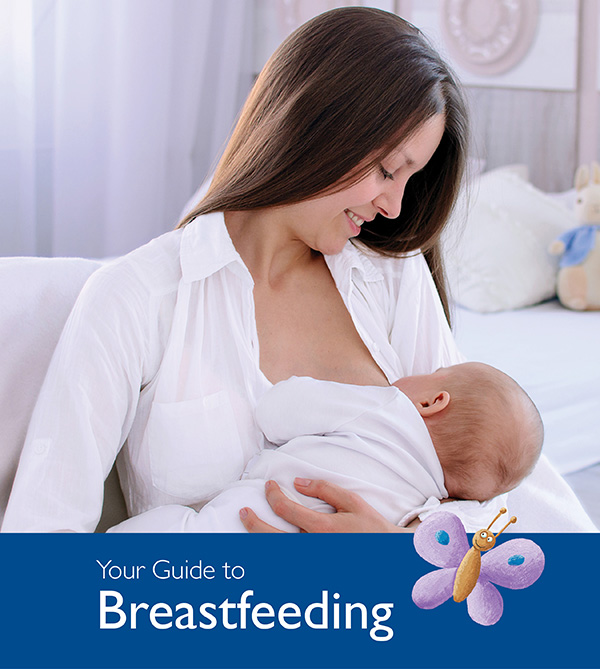Preparing for Breastfeeding
Breastfeeding is a natural process but also a learned skill for you and your baby. The staff of the Maternal-Child Unit and our lactation consultants will be there to support you. Every baby is different and so is every breastfeeding experience.
- Skin-to-skin contact immediately after your baby is born is the best way to begin the experience of breastfeeding your baby.
- Breastfeed your baby as soon as possible after you give birth, when your baby is wide awake.
- Breastfeeding now takes advantage of high levels of oxytocin, the hormone that helps milk flow and causes the uterus to contract, decreasing bleeding.
- Ask for help. Our nurses and lactation consultants will be there to support you as you begin to feed your baby.
- Breastfeed often. Feeding your baby 8 to 12 times a day will ensure that you are making plenty of milk.
- Learn and follow your baby’s feeding cues. Rooming-in will help you recognize the first signs that your baby is ready to feed.
Offer the breast as soon as baby shows hunger cues
- Rapid eye movements (fluttery eye movements while eyes are closed).
- Increased alertness or activity.
- Rooting: turning toward the breast and opening mouth as though to feed or when a touch on the cheek results in your baby turning toward the touch.
- Hands to mouth, or sucking on own hand.
- Your baby does not have to cry to let you know they are hungry. Crying is a late feeding cue.
Babies often give frequent feeding cues for milk. Frequent feeding places the order with mom’s body for lots of milk. Your baby will need to eat 8 or more times in 24 hours to feel settled and content. Small, frequent feeds ensure a good milk supply. The more baby consumes, the more breast milk you will make.
Tips to keep your breastfeeding on track
- Do not supplement breast milk with formula or other supplements, unless medically necessary. Unnecessary supplementing can reduce milk supply.
- Feed only breast milk for 6 months. No water or solid foods are needed.
- Avoid using bottles and pacifiers that can interfere with latching and make breastfeeding more challenging.
- If supplements are medically necessary, talk to your nurse or lactation consultant about using alternative methods such as a spoon, syringe or cup to feed your baby.
Learning to Latch
A good latch is very important for effective breastfeeding and may take time, practice and patience for mom and baby.
Our lactation specialists offer these tips:
- To begin, hold your baby close with baby’s tummy facing your tummy.
- Make sure to bring baby to breast, not breast to baby.
- Have one hand supporting your baby’s neck and shoulders and use your other hand to support the breast behind the areola.
- Start with your baby’s nose close to the nipple.
- Stroke downward with your nipple across your baby’s lips to encourage them to open their mouth.
- Wait until your baby’s mouth is open wide and gently pull baby’s shoulders toward your breast with the head tilted back slightly to make it easy to suck, swallow and breathe.
- Baby should take a big mouthful of breast, not just the nipple, to ensure your baby gets more milk and so you don’t feel any discomfort.
A good latch feels comfortable. The first moment might be slightly uncomfortable.
- If you feel discomfort for more than a minute, remove your baby and re-latch. Consult with your nurse if you continue to have discomfort throughout the entire feeding.
- To remove your baby from the breast, break the suction first by sliding a clean finger between your nipple and your baby’s gums.
Proper positioning and latching:
- Ensures baby gets enough milk.
- Helps build milk supply.
- Prevents nipple soreness.
Take pride that you are giving your baby the many benefits of breastfeeding. We are here to support you on your breastfeeding journey. We wish you a wonderful experience!

